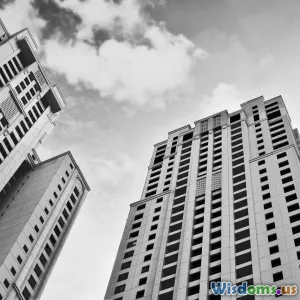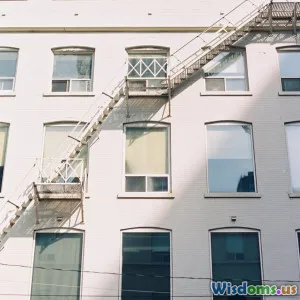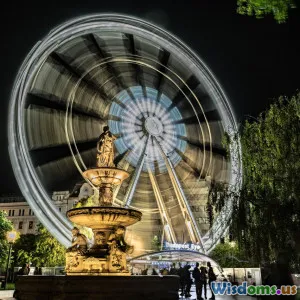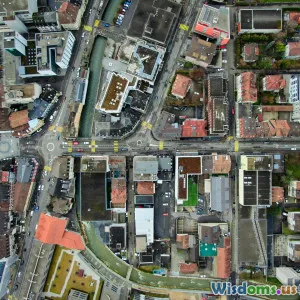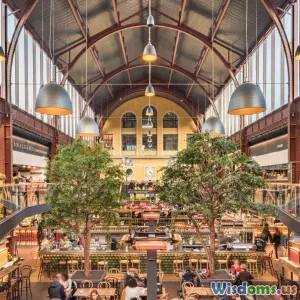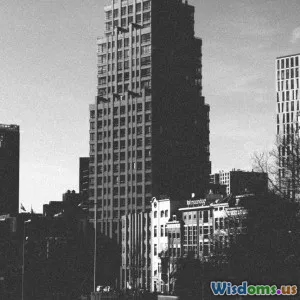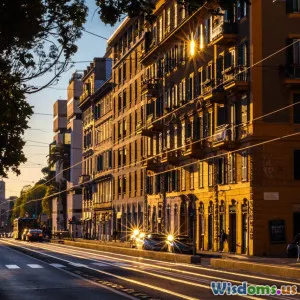
Revitalizing Urban Areas through Design
7 min read Explore how innovative design practices can breathe new life into urban environments, enhancing livability and community engagement. (0 Reviews)
Revitalizing Urban Areas through Design
Urban areas face numerous challenges, ranging from economic decline and population shifts to environmental degradation and social inequities. However, through thoughtful architecture and urban design, these challenges can be transformed into opportunities for revitalization. This article explores the essential role of design in rejuvenating urban areas, providing fresh insights and practical examples.
Understanding Urban Revitalization
Urban revitalization is the process of improving the economic, social, and environmental conditions of a community. It often involves the transformation of neglected or underutilized spaces into vibrant neighborhoods that foster community engagement, attract investment, and enhance quality of life. Key elements include:
- Community Involvement: Engaging local residents in the planning process to ensure their needs and preferences are met.
- Sustainable Practices: Incorporating green technologies and materials that minimize environmental impact.
- Mixed-Use Developments: Designing spaces that blend residential, commercial, and recreational areas to create a dynamic urban environment.
The Role of Architecture in Urban Design
Architecture plays a crucial role in urban revitalization by shaping the physical environment of cities. Here are some design strategies that can effectively revitalize urban spaces:
1. Adaptive Reuse of Buildings
One of the most sustainable approaches to urban revitalization is the adaptive reuse of existing structures. This involves repurposing old buildings for new functions, preserving historical significance while reducing the environmental impact of new construction. For example, warehouses can be transformed into loft apartments or art galleries, maintaining their character while injecting new life into the area.
2. Creating Mixed-Use Developments
Mixed-use developments combine residential, commercial, and public spaces, promoting a sense of community and reducing the need for transportation. By designing neighborhoods where people can live, work, and play, urban planners can reduce traffic congestion and create vibrant areas. Examples include the High Line in New York City, which integrates parks, retail, and residential spaces along repurposed railway tracks.
3. Enhancing Public Spaces
Public spaces are the heart of urban areas, serving as places for social interaction, recreation, and cultural expression. Designing inclusive and accessible public spaces encourages community engagement and fosters a sense of belonging. Initiatives such as parklets, street murals, and community gardens can enhance the urban fabric and provide opportunities for residents to connect.
4. Incorporating Green Infrastructure
Integrating green infrastructure into urban design not only beautifies neighborhoods but also addresses environmental concerns. Features such as green roofs, rain gardens, and urban forests can help manage stormwater, reduce heat islands, and improve air quality. For instance, the Bosco Verticale (Vertical Forest) in Milan demonstrates how vertical gardens can enhance urban living while promoting biodiversity.
Case Studies of Successful Urban Revitalization
Examining successful urban revitalization projects provides valuable insights into effective design strategies. Here are three notable examples:
1. The High Line, New York City
Originally an elevated railway, the High Line has been transformed into a public park that stretches over 1.5 miles through Manhattan. This project has not only increased property values in the surrounding area but also spurred new business ventures, creating a vibrant urban ecosystem.
2. The 606, Chicago
Similar to the High Line, The 606 is a 2.7-mile elevated trail that connects several neighborhoods in Chicago. This project has revitalized surrounding areas by promoting active transportation and providing green space for residents, demonstrating the power of adaptive reuse and community-focused design.
3. Medellín’s Metrocable
In Medellín, Colombia, the introduction of the Metrocable, a cable car system, has dramatically improved access to previously isolated neighborhoods. By integrating public transportation with urban design, the city has experienced a significant reduction in crime rates and an increase in social cohesion.
The Future of Urban Revitalization
As cities continue to evolve, the integration of technology and innovative design practices will play a pivotal role in urban revitalization. Concepts like smart cities, which utilize data and technology to enhance urban living, and biophilic design, which emphasizes human-nature connections, are gaining traction.
Furthermore, addressing social inequities through design will be vital for creating inclusive urban environments. This involves prioritizing affordable housing, accessible public spaces, and community-led initiatives that empower residents to take part in the revitalization process.
Conclusion
Revitalizing urban areas through design is a multifaceted endeavor that requires collaboration among architects, urban planners, community members, and policymakers. By embracing innovative design strategies and prioritizing sustainability and inclusivity, cities can transform challenges into opportunities, creating vibrant, resilient urban spaces for future generations. Through thoughtful design, we can not only enhance the aesthetics of urban areas but also foster a sense of community and belonging among residents.
Rate the Post
User Reviews
Popular Posts










